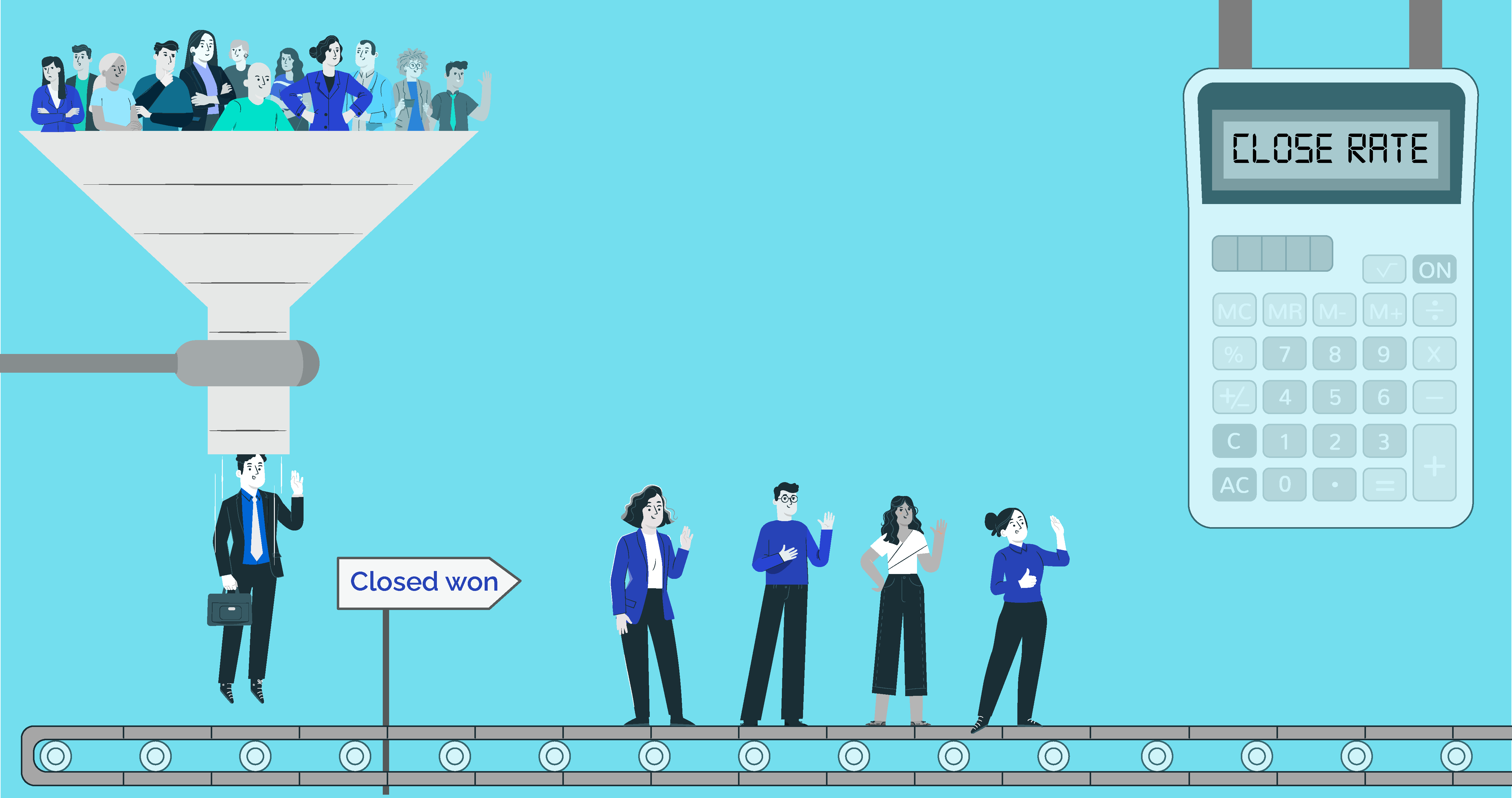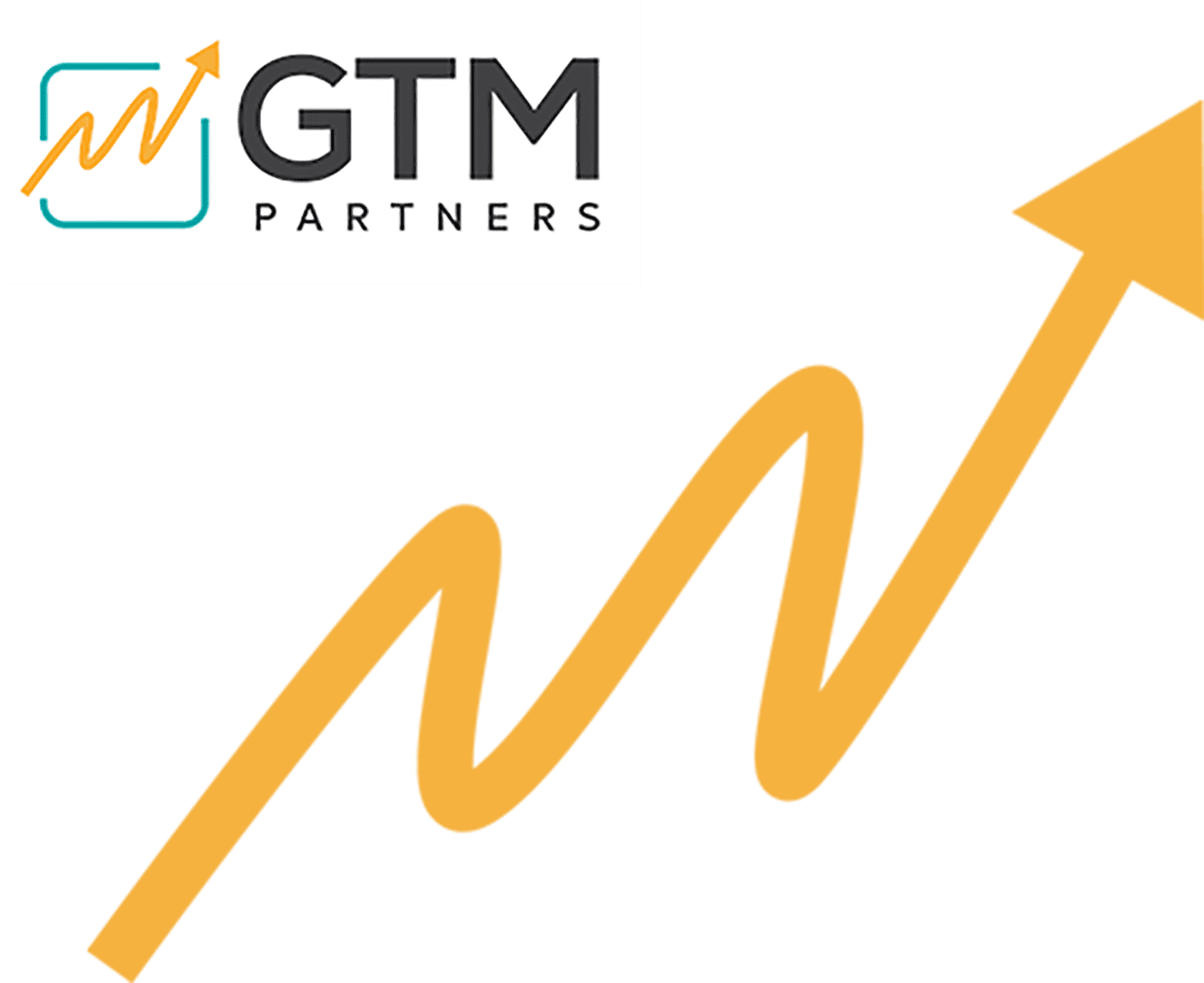Five Strategies to Make Your Close Rates Trend Upward
There are two RevOps metrics that are often conflated with each other - win rate and close rate.


There are two RevOps metrics that are often conflated with each other – win rate and close rate.
Win rate = # Closed Won / (# Closed Won + # Closed Lost)
Close rate = $ Closed Won / $ pipeline created at start of period
Because win rate doesn’t account for opportunities that slip to later periods, something that has impacted a lot of businesses during the recent market crash, it is not a good predictor of ARR forecasts misses.
The close rate, on the other hand, is a much better gauge of ARR forecast. Typically, the close rate in the technology sector is around 30%. If the close rate drops to 25%, then by definition, 25% of the current period’s initial pipeline value can be expected to close by the end of the period. This predictive insight is the reason that many companies now also include close rate on their RevOps dashboard.
To improve close rate and drive consistent target attainment, one needs to get high-quality opportunities that will progress to the next positive stage within the expected time. This blog covers the 5 most effective ways of improving close rate.
1. Seek Out High-Intent Leads
“Only 3% of Web Visitors Fill Out On-Site Forms.” – Numerous studies
Only about 3% of website visitors provide their firmographic data via registration forms, according to studies performed by 6sense, Unbounce and Wordstream. Intent data, therefore, plays a crucial role in reducing lead to opportunity time for businesses.
In other words, you can only take a horse to water, you cannot make it drink. It’s better to find horses that are thirsty to begin with. Capturing and analyzing the online B2B buying behavior of prospects both on your website and across the internet allows businesses to understand a prospect’s priorities, and engage them at the point of need with tailored solutions. This targeted and data-driven approach not only provides access to high quality pipeline (aka thirsty horses) but also accelerates the sales cycle resulting in faster flows to revenue.
2. Efficient Lead Nurturing
“Strike ^if and while the iron is hot.” – variation of Old English proverb
If campaign touchpoints are scored incorrectly and overweighted relative to their actual contribution, a large number of under-nurtured leads will become MQLs, in spite of them having a low likelihood of ever becoming SQL leads. The impact of this is that SDR/sales reps waste time in trying to qualify ‘hopeless’ leads potentially missing out on the real leads that they should be focusing on. The flip side of this is when marketing campaigns don’t nurture leads properly and leads take too long to be marketing qualified. Now, leads that could have yielded new pipeline take too long to reach the SDR/sales team, and by the time they do, the customer may have found a different solution for their needs.
By implementing efficient lead nurturing, businesses can engage with leads at various stages of the buying journey and guide them towards conversion in a timely manner. It also ensures smoother handoffs from the marketing to the sales team, reducing potential confusion or risk that could deter a customer from completing a purchase on time
3. Multi-threaded GTM
“On average, sales reps who were multi-threaded within the account had a 34% lift in new business win rate when compared with single-threaded reps.” – LinkedIn
There are multiple decision makers and influencers in B2B sales. According to research by CEB (now part of Gartner), an average of 6.8 decision makers are involved in every B2B purchase.
Yet many sales reps don’t engage with more than one contact within the account. If that contact is not the decision maker, it can stall the sale. Research conducted by Gong found that on average, enterprise deals of $100k+ were 233% less likely to close without decision maker engagement.
On the marketing side too, if multiple contacts within the account are concurrently consuming content on your website or engaging with your campaigns, that is usually a strong signal of purchase intent. Unfortunately, many organizations lack account-level awareness on the lead side altogether and each lead from the account is treated individually on its own merit.
Having multi-threaded account tracking across marketing and sales will ensure that accounts depicting buying intent are quickly identified and appropriately prioritized, which will in turn benefit the company’s win rate and close rate.
4. Alignment with Customer Expectations
“The key is to set realistic customer expectations, and then not to just meet them, but to exceed them – preferably in unexpected and helpful ways.” – Richard Branson, Virgin Group
Deals often stagnate when there is a mismatch between the customer’s expectations and what the product offers the customer during the trial/POC. In order to keep the opportunity alive and healthy, sales reps need to listen to the customer, understand their expectations and ensure that the sales narrative and product experience directly addresses those expectations. It is worth noting that expectations are not just explicitly stated (in an RFI or a discovery call), but can also be implicit (unstated requirements based on the customer’s past experiences with other products). These expectations are dynamic and could also be influenced by individuals inside the customer organization or by external competitors.
5. Maintain regular sales cadence and account engagement
“70% of companies that are leaders in optimizing sales engagement processes are seeing higher win rates than others.” – Forrester
Everyone is juggling so many projects these days that it’s normal for milestones to get pushed out along the way. If the deal has to close on time, the onus is on the sales team to keep the project and your product top of mind for the customer. Sales reps can improve close rate by establishing and maintaining a specific cadence of communications (emails, calls and calendar meetings) with the champion and other account contacts.
Sales leaders can also improve rep engagement by freeing up rep time from time-consuming, tedious tasks. By automating these low-value tasks, AEs can focus on actual selling and ensure that they’re not leaving coverage gaps with any of their active opportunities.
BigLittle Can Help
BigLittle RevenUp is a Revenue Intelligence and Revenue Leak Mitigation Platform for GTM teams looking to drive consistent long-term revenue growth. By working with and at a level above the operational GTM tools, BigLittle can help you get a complete picture of what’s happening and inform revenue teams on how to improve key metrics and achieve consistent growth.
RevenUp can help you orchestrate all of the above close rate strategies. As an example, the below chart shows an example of how close rate correlates with multi-threaded accounts in a given time period.


Get a touch! to schedule a free demo.



